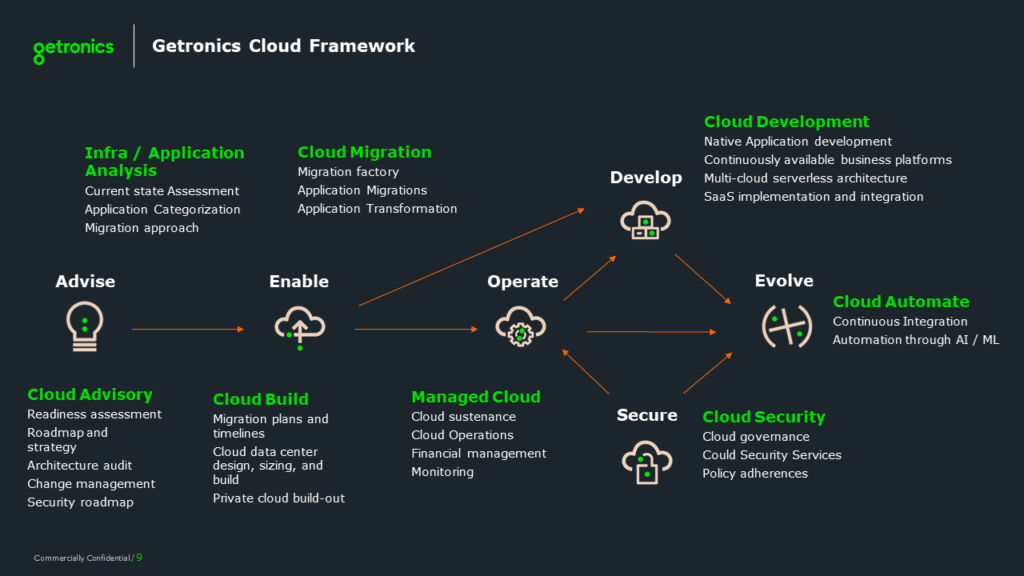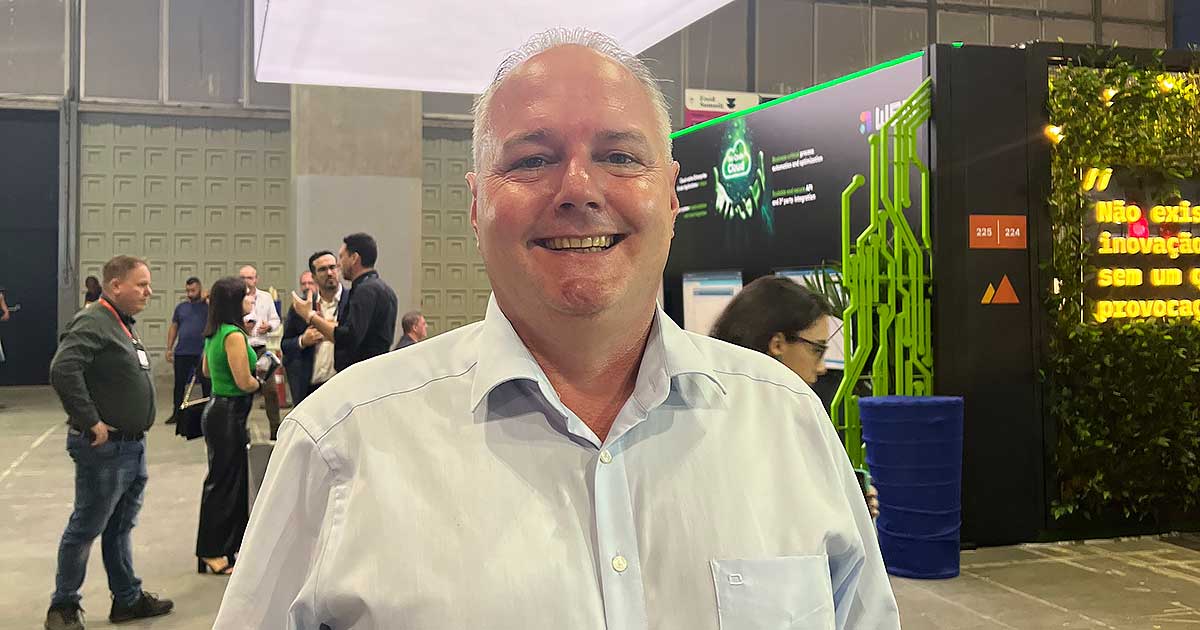
Richard Morris
Head of Infrastructure Solutions - Cloud Services
In this article:
A recent article detailed the approach that’s worked for Getronics’ customers for many decades: a four-stage cycle of advise, enable, operate, and evolve. We say “cycle” because your cloud journey doesn’t stop. With any business process, new opportunities for improving your competitiveness arise as time goes on—and Getronics is there to help you take advantage.

(Could this be why our clients stay with us far longer than average … and we recently went above the industry average on our NPS scores?)
Many MSPs have a similar model. And most work just fine. But there’s one step we believe is undervalued in most journeys — for us is crucial: operate. Because our philosophy isn’t to build, leave, and wait for your next project. It’s to “run the program”: start everything up, watch it working, and see where it could be improved further.
Why? Simple pragmatism. Nothing beats observing real-world conditions as a basis for your next action. Let’s look deeper into Getronics’ secret ingredient: the source of smooth operations.

Complexity: a crisis of confidence
Why do many Managed Service Providers (MSPs) not highlight the operate phase? Perhaps it’s a lack of confidence: they don’t want to admit to a client that unexpected things can happen after their shiny new cloud setup is switched on.
At Getronics, we expect the unexpected. Actually, it’s a law of nature.
Everyone’s heard of Chaos Theory, and how a butterfly flapping its wings in the Amazon can cause a hurricane off Florida. The idea it illustrates: the simplest initial conditions can have massive effects down the line. Elon Musk obsesses about fractional iterations in his Raptor engines; Mathematica’s Stephen Wolfram wrote the vast textbook “A New Kind of Science” explaining it.
The world’s greatest physicists and engineers agree: you can’t predict reality when there’s complexity around. The only way to uncover such effects is to set the system in operation and watch what happens.
And that’s why we do an operate phase. It’s both art and science, but you’ll find four principles at play in every project.
Cloud sustenance: working out what works
Every solution must be sustainable. Not in the green sense (although that’s important too) but in the business sense. As people adopt and adapt to their new ways of dealing with data, is the cloud really delivering sustained improvements over time?
After all, going cloud—whether that is private, public, or hybrid—should mean more than replicating your existing applications on to a new infrastructure. However, even a “lift-and-shift” sometimes needs skilled attention, as the services around existing applications are configured and tweaked to make it work the way it did before.
At the very least, it’s about optimising: making sure applications take fewer resources, serve more users, cost less. Moving up, it’s about re-engineering, recreating, and rearchitecting applications so they work natively in their new environment.
And you can only move up through these stages—seen in Gartner’s 5 R’s Model—when you see a system working in the real world. Not in theory—but in practice.
Cloud operations: keeping the plates spinning
No IT infrastructure has ever been “fit-and-forget”—all require everyday maintenance at minimum. In fact, the best IT teams deliberately foster a state of “dynamic disequilibrium” (another term with its origins in Chaos Theory!): constantly poking and prodding the system, keeping everything moving and buzzing rather than “settled” into a fixed configuration. This means negative side effects can be noticed before they reach critical mass.
In short, cloud operations concentrate on what you “see on the surface”: managing and optimising applications and data without digging down into the underlying infrastructure. It’s the essence of management: work with what you have, and get the best result from it.
For Getronics, this part of the operate phase includes managing specified conditions like SLAs (Service Level Agreements) and making sure capacity can always answer demand. It’s why a relationship with Getronics tends to be fruitful long-term—and sets the stage for the next phase, evolve.
Financial management: show me the money
Business is ultimately about money. Accordingly, a great way to check your cloud solution is performing is by looking at its effects on cold, hard cash.
The performance metrics of a cloud-based solution are very different from the one in the server basement. Connectivity to remote resources matters above all; with computing crunch mostly offsite, being able to trust an SLA is key. While regulatory compliance is a major factor: data housing requirements may dictate a private cloud for part of your solution even if a public cloud sounds simpler. All these measures have a cost to them, and if you can measure it, you can manage it.
But the key concept of financial management goes back to the days of Henry Ford: ideally, everything scales. The more you ask it to do, the greater the returns are. Increasing capacity means more people getting their work done; new applications increase productivity beyond the cost of the system. Your cloud solution should get more cost-effective as more people use it—not less.
At Getronics, we don’t just cross our fingers and hope for the best; we act as an interested partner, looking to make your financial metrics look better the longer the relationship lasts. After all, if you become successful and grow, that’s our success too.
Monitoring
None of this can happen without visibility into how your system is working. Which makes monitoring a fourth pillar of the operate phase.
Much of it the average customer will never see. But as your system starts running, an array of checks, metrics, and measures are being constantly recorded and reported, ready to alert managers about issues or red flags.
Of course, this also enables comprehensive reporting to your in-house team—letting you see the Big Picture of how your cloud solution is performing, or drill down into any level of detail you want.
Conclusion: Setting the stage for evolve
There are other parts to the operate stage, but these four are the biggies. And with 2,000 cloud-savvy developers on the payroll, it’s perhaps the part of our end-to-end portfolio that marks Getronics out as unique.
The operate stage sets the scene for truly continuous improvement as part of your technology strategy. To evolve the system as it operates, maximising your opportunity for cost-effectiveness in every application, every database, every business process. A virtuous circle, where each action makes the next better.
Why not take your first step on that journey today?




